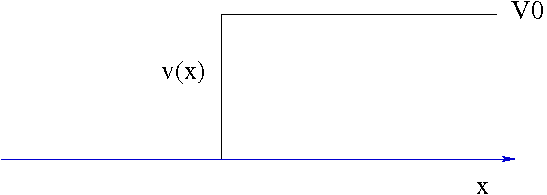Sample questions for exam 2
| Line 16: | Line 16: | ||
where <math>\Delta E_n \equiv E_{n+1} - E_n</math> | where <math>\Delta E_n \equiv E_{n+1} - E_n</math> | ||
| − | 5) Apply the raising operator | + | 5) Apply the raising operator to the ground state wavefunction for the harmonic oscillator to construct the first excited state wavefunction. Verify by direct calculation that this function satisfies the Schrodinger equation. |
Revision as of 18:29, 28 February 2008
1) A particle is incident from the left with energy E > V0. Compute the reflection coefficient.
2) Match the figures on the left, with the appropriate one on the right
3) Consider a particle passing over a rectangular potential barrier from left to right. Write down the general form of Ψ(x) in the three regions. Then use the boundary conditions to derive 4 equations for the 5 unknown coefficients. For 10 bonus points, use these 4 equations to derive the transmission coefficient.
4) For a particle in a box, show that the fractional difference in energy between adjacent eigenvalues is

where 
5) Apply the raising operator to the ground state wavefunction for the harmonic oscillator to construct the first excited state wavefunction. Verify by direct calculation that this function satisfies the Schrodinger equation.

